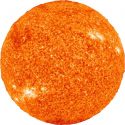 Asteroids were first discovered in 1801 and since then, there have been over 150 million discovered asteroids measuring over 100 meters in size. The first asteroid to be discovered was Ceres which is also the largest asteroid in our Solar System.
Asteroids were first discovered in 1801 and since then, there have been over 150 million discovered asteroids measuring over 100 meters in size. The first asteroid to be discovered was Ceres which is also the largest asteroid in our Solar System.
What is an Asteroid?
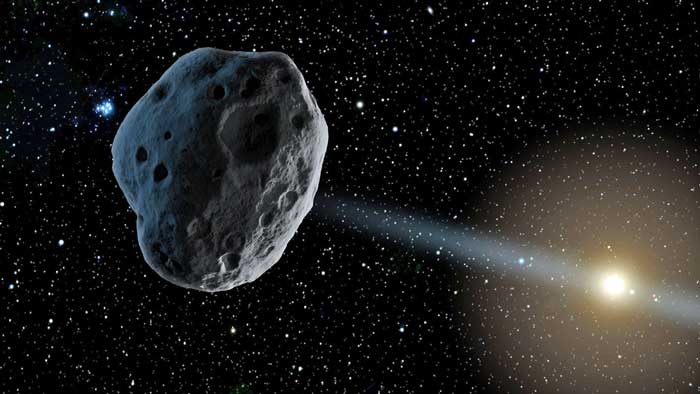 Asteroids are the solid objects mostly made of rocks and metals. They are irregular in shape and have varying sizes from a few meters to a few hundred kilometers. Asteroids in our solar system mostly orbit around the Sun and are different from comets, moons, and planets.
Asteroids are the solid objects mostly made of rocks and metals. They are irregular in shape and have varying sizes from a few meters to a few hundred kilometers. Asteroids in our solar system mostly orbit around the Sun and are different from comets, moons, and planets.
Most of the asteroids in our solar were formed along with the formation of the planets around 4.5 billion years ago. Due to this reason, asteroids can be studied to find the condition of the newly born solar system.
Composition of Asteroids
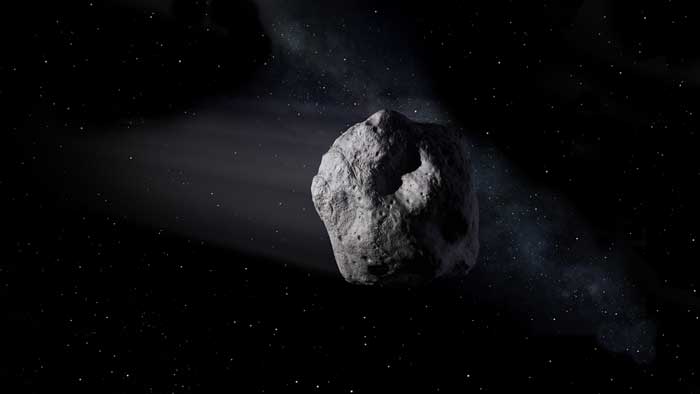 There are various types of asteroids that are in different parts of the solar system. So their composition also varies between rocky, icy, and metallic. Most of the asteroids have rocky composition along with metals. There are also many asteroids whose surface is covered with ice. The ice can be made of various substances, e.g. water, carbon dioxide, and ammonia.
There are various types of asteroids that are in different parts of the solar system. So their composition also varies between rocky, icy, and metallic. Most of the asteroids have rocky composition along with metals. There are also many asteroids whose surface is covered with ice. The ice can be made of various substances, e.g. water, carbon dioxide, and ammonia.
Types of Asteroids
Asteroids can be categorized in various ways, e.g. according to their size, color, and composition. But according to their composition, there are 3 main types of asteroids which are Carbon, metallic, and stony asteroids.
- Carbon Asteroids – These asteroids are black in color due to the high percentage of elemental carbon; they contain around 75% carbon.
- Metallic Asteroids – Most parts of these asteroids are metallic along with some rocky surfaces. There are various metals from which they are formed, but most common are iron and nickel.
- Stony Asteroids – The major constituent of these asteroids is silica, also called silicon dioxide. It is the same silica that makes sand on the Earth on which you step-on.
Where Asteroids are Found?
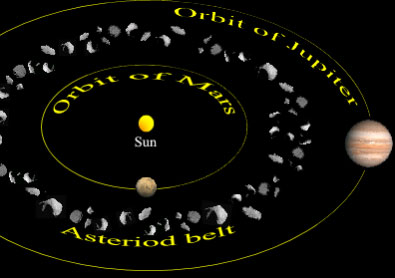 Individual asteroids are found throughout our solar system. But, the majority of the asteroids are found in the asteroid belt. The asteroid belt is an orbit around the Sun that is located after the Mars and before the Jupiter. It is estimated that the asteroid belt contains around 2 million asteroids that are larger than 1 km in size.
Individual asteroids are found throughout our solar system. But, the majority of the asteroids are found in the asteroid belt. The asteroid belt is an orbit around the Sun that is located after the Mars and before the Jupiter. It is estimated that the asteroid belt contains around 2 million asteroids that are larger than 1 km in size.
There are also asteroids that are near the Earth and are called Near-Earth Asteroids (NEAs). NEAs pass closely to the Earth and there are around 14,000 known NEAs.
What are Meteoroids, Meteorites, and Meteors?
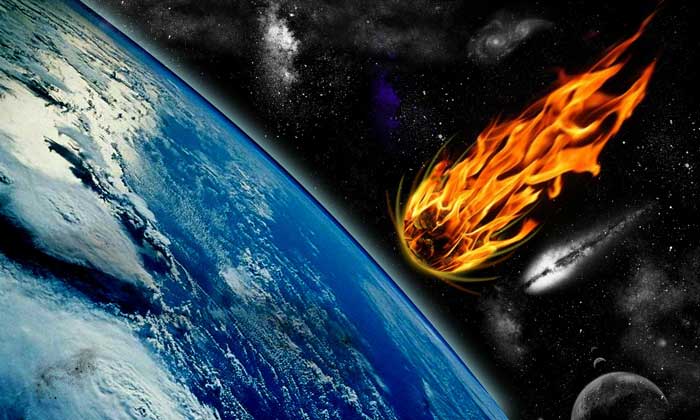 Meteoroids are different from asteroids in many aspects and are relatively smaller in size. Most of the time, they are smaller pieces that are torn from asteroids and Comets. Meteoroids have various sizes that range from 10 micrometers to 10 meters. Our Earth is constantly hit by these objects that burn in the atmosphere.
Meteoroids are different from asteroids in many aspects and are relatively smaller in size. Most of the time, they are smaller pieces that are torn from asteroids and Comets. Meteoroids have various sizes that range from 10 micrometers to 10 meters. Our Earth is constantly hit by these objects that burn in the atmosphere.
Most of the meteoroids that hit the Earth are completely vaporized in the Atmosphere and are called meteors. They vaporize because of the intense heat produced by their friction with the atmosphere due to higher velocities. Meteoroids enter the Earth’s atmosphere at the speed ranging between 10 to 70 km/sec. But very few meteoroids survive the intense heat and successfully reach the Earth; they are called meteorites.
Facts
- There are asteroids that share their orbit with larger planets and are called Trojan asteroids.
- When an asteroid or piece of it enters in the atmosphere of the Earth, it is called a meteoroid.
- There is a theory about dinosaur extinction which says that dinosaurs became extinct after a large asteroid, around 10 km in diameter, hit the Earth.




